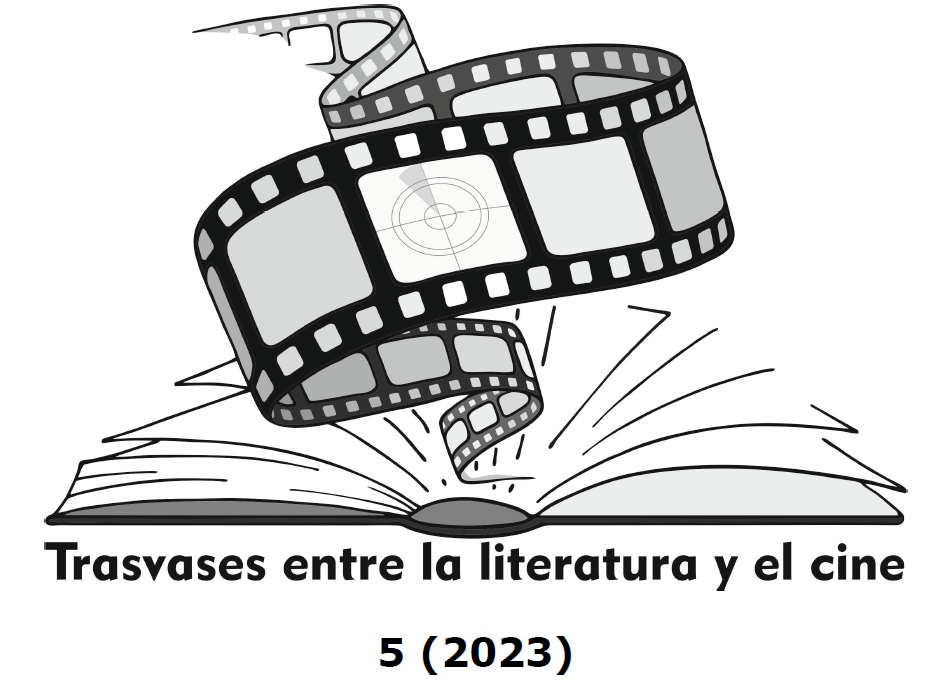Accommodation of Data Requirements Analysis to the Philological Context of the CIRCE Proje
DOI:
https://doi.org/10.24310/tlc.5.2023.16516Keywords:
Digital Humanities, Software Engineering, Requirements Analysis, Data Analysis, CIRCEAbstract
The problems derived from the collaboration between representatives of thematically diverse disciplines are a continuous focus of debate in the digital humanities field (Pitti, 2008: 485-486; Edmond, 2016: 54-56). Due to the need for designing, building, and administering a database containing philological information and a web application that gives access to said database, the philological research project “CIRCE: Early Modern Theatre on Screen” (https://circe.uv.es) has encountered the described issue since its inception. A fundamental objective when designing a software system with such characteristics consists of guaranteeing a requirements eliciting process whose results contemplate the team’s research needs, especially regarding the scope and structure of the data to store and manipulate. Said process must be managed including all stakeholders, in this case the project’s principal investigator, its members (researchers in the philology area who will also perform as the application’s users), and the information technology specialists in charge of its technical side. The success of such a task depends on adapting the linguistic register with which data needs are described to the abstraction level of the users (Sommerville, 2016: 103). Previous experiences in software development prove that the lack of collaboration between said actors aids the failure of such effort (Pressman and Maxim, 2020: 57-58; Harrington, 2016: 28).
To prevent misunderstandings in the identification of data requirements between the philological and technical members of CIRCE, a pre-analysis phase has been performed with the objective of determining which are the relevant data entities for the project’s purpose, which are the attributes of said entities to take into account, and which the accepted values for each attribute. Said activity has consisted in the elaboration of a series of data templates which have been distributed to the members of the project (future users of the web application), the inclusion by said members of information about audiovisual adaptations of European Renaissance theatre, and the subsequent analysis of the usage each team member has given to the templates. For the users of the application, the templates have played the part of use scenarios (Sommerville, 2016: 18); for the technical team, they have provided drafts of the data model to implement (Hills, 2016: n. pag.; Meier and Kaufmann, 2019: 25). The process has been refined iteratively through successive meetings and has allowed for an analysis of the project’s data needs whose level of detail and precision would have been hardly achieved had not all project members participated in it. This course of action has guaranteed the inclusion and implication of the whole team, mostly philological researchers, in a technical task generally associated with the software engineering discipline.
This article describes and explains said process, emphasising its interdisciplinary approach, its unifying attitude, and its interest in guaranteeing a high level of quality in the data requirements detection process. To achieve all of this, it references literature from different fields (digital humanities, software engineering, and database design), it remarks the need to apply software engineering concepts in similarly-scoped projects, it stresses the significance of attention to detail in data analysis (Date, 2019: 393), and it involves the user as an integral part of an information system’s data modelling process. The study of said process’s application to the context of the CIRCE project demonstrates the advantages of avoiding haste in the identification of data requirements thanks to assigning a generous amount of time to said task and enforcing the involvement of the users. The presence of mixed professional profiles that combine knowledge from such dissimilar spheres as philology and computing is assessed as advisable, as it reduces the communication problems derived from the absence of a common language between members of different knowledge domains.
Downloads
Metrics
Publication Facts
Reviewer profiles N/A
Author statements
Indexed in
-
—
- Academic society
- N/A
- Publisher
- Universidad de Málaga
References
Celko, Joe (2014), Joe Celko’s Complete Guide to NoSQL: What Every SQL Professional Needs to Know about Nonrelational Databases, Waltham, MA, Elsevier.
CIRCE (2023), «Inicio», CIRCE – Early Modern Theatre on Audiovisual Communication, s. pág. [En línea: https://circe.uv.es/es. Fecha de consulta: 15/03/2023].
Date, C. J. (2019), Database Design and Relational Theory: Normal Forms and All That Jazz, 2ª edición, Healdsburg, Apres.
Edmond, Jennifer (2016), «Collaboration and Infrastructure», en A New Companion to Digital Humanities, ed. Susan Schreibman, Ray Siemens y John Unsworth, Chichester, Wiley Blackwell, págs. 54-65.
Harrington, Jan L. (2016), Relational Database Design and Implementation, 4ª edición, Cambridge, MA, Elsevier.
Hill, James L. (1986), «“What, Are They Chidren?” Shakespeare’s Tragic Women and the Boy Actors», Studies in English Literature, 1500-1900, 26/2, págs. 235-258.
Hills, Ted (2016), NoSQL and SQL Data Modeling: Bringing Together Data, Semantics, and Software, Basking Ridge, Technics Publications, libro electrónico.
Jowett, John (2007), «New Created Creatures: Ralph Crane and the Stage Directions in The Tempest», Shakespeare Survey, 36, 107-120.
Meier, Andreas y Michael Kaufmann (2019), SQL & NoSQL Databases: Models, Languages, Consistency Options and Architectures for Big Data Management, trad. del alemán al inglés de Anja Kreutel, Wiesbaden, Springer Vieweg.
Mora-Rioja, Arturo (2016), Bases de datos: diseño y gestión, Madrid, Síntesis.
Pitti, Daniel V. (2008), «Designing Sustainable Projects and Publications», en A Companion to Digital Humanities, ed. Susan Schreibman, Ray Siemens y John Unsworth, Malden, Oxford y Victoria, Blackwell, págs. 471-487.
Pressman, Roger y Bruce Maxim (2020), Software Engineering: A Practitioner’s Approach, 9ª edición, Nueva York, McGraw Hill.
Shakespeare, William ([1611] 2008), The Tempest, The Norton Shakespeare, 2ª edición, ed. Stephen Greenblatt, Nueva York, Norton, págs. 3066-3115.
Sommerville, Ian (2016), Software Engineering, 10ª edición, Harlow, Pearson.
Society of Motion Picture Engineers (1917), «Motion Picture Nomenclature», Transactions of the Society of Motion Picture Engineers, Meeting of October 8-9, 1917, 5, s. pág.
Svensson, Patrick (2014), «Humanities Computing as Digital Humanities», en Defining Digital Humanities: A Reader, ed. Melissa Terras, Julianne Nyhan y Edward Vanhoutte, Farnham y Burlington, Ashgate, págs. 159-186.
Terras, Melissa (2014), «Disciplined: Using Educational Studies to Analyse “Humanities Computing”», en Defining Digital Humanities: A Reader, ed. Melissa Terras, Julianne Nyhan y Edward Vanhoutte, Farnham y Burlington, Ashgate, págs 67-96.
Downloads
Published
How to Cite
Issue
Section
Categories
License
Copyright (c) 2023 Arturo Mora-Rioja

This work is licensed under a Creative Commons Attribution-NonCommercial-ShareAlike 4.0 International License.
All authors published in this journal accept the following copyright terms:
a. Authors retain their authors´ rights (copyright) and grant First Publication Rights to the journal, which whill be published under a the Creative Commons Attribution-NonCommercial-ShareAlike 4.0 International (CC BY-NC-SA 4.0) license. All about this license is available in the following link: <http://creativecommons.org/licenses/by-nc-sa/4.0>
b. Authors may separately establish additional agreements for the non-exclusive distribution of the version of the work published in the journal (e.g. including it in an institutional repository, or publishing it in a book) with an acknowledgement of its initial publication in this journal.
c. Authors are allowed and encouraged to disseminate their work electronically (e.g. in institutional repositories or on their own website) as this can lead to productive exchanges, as well as earlier and more extensive citation of published work.
The author is responsible for obtaining permission from the copyright holder when using copyrighted materials.
This electronic journal is published by University of Málaga (UmaEditorial), thus it is necessary to cite the origin of any partial or total reproduction.








22.png)










